Culture
Check out the story of Lablup
Jul 14, 2025
Culture
Inside Lablup’s AI Hackathon 'Idea | up'

Juyoung Lim
Contents Creator
Jul 14, 2025
Culture
Inside Lablup’s AI Hackathon 'Idea | up'

Juyoung Lim
Contents Creator
Inside Lablup’s Internal AI Hackathon
In recent years, the way we perceive and use technology has undergone a profound transformation. Where we once simply selected from a menu of pre-defined features, we’re now entering an era where anyone can design and assemble tools tailored to their own goals. Tools are no longer static bundles of functions—they’re evolving, organic structures that are built with language, adapt to context, and grow alongside their users.
This shift signals a fundamental reimagining of how technology itself is created. SaaS products are no longer just about “automation.” At the center of this new landscape are Agentic AIs: systems that understand the purpose and process of a task and execute it accordingly. Powered by large language models (LLMs), these agents interact with users through natural language interfaces, making technology more accessible and flexible than ever before.
What’s truly exciting is that this change isn’t limited to developers or technical experts. While the complexity of features may vary, anyone can now implement functionality and apply it to real-world tasks with just a few lines of prompts. But just because the tools are easier to use doesn’t mean mastery comes easily. The key isn’t how well you operate the tool, but how intuitively you can structure problems and position AI within that framework.
Our recent internal hackathon at Lablup was a chance to put this intuition to the test. It wasn’t just about development—teams from research, sales, finance, and developer relations all came together. Each group defined their own problems in their own language and set out to design unique AI-powered tools. It was a collective experiment in rethinking how we approach challenges and leverage AI, regardless of our backgrounds or roles.
Doing is Believing
The reason every member of Lablup took part in the hackathon is simple: technology doesn’t become truly yours just by studying it in theory. It’s only through hands-on experience—building, making mistakes, and iterating to solve real problems—that you come to understand how tools work, where their limits lie, and what new possibilities might emerge beyond those limits. This kind of learning shouldn’t be limited to developers; when people from all parts of the company share this experience, the entire organization can move forward in the same direction.
At the Lablup Idea | up Hackathon, we didn’t set a fixed theme. Instead, everyone was free to choose repetitive tasks or bottlenecks from their own work to tackle. This wasn’t just a technical experiment—it was a chance to explore, together, how AI could be integrated into practical problem-solving. As a result, everyone at Lablup was able to ask themselves: “What can AI do right now? And what should humans be designing?” Each person found their own answers from their unique perspective.
Initiating Idea | up Hackathon
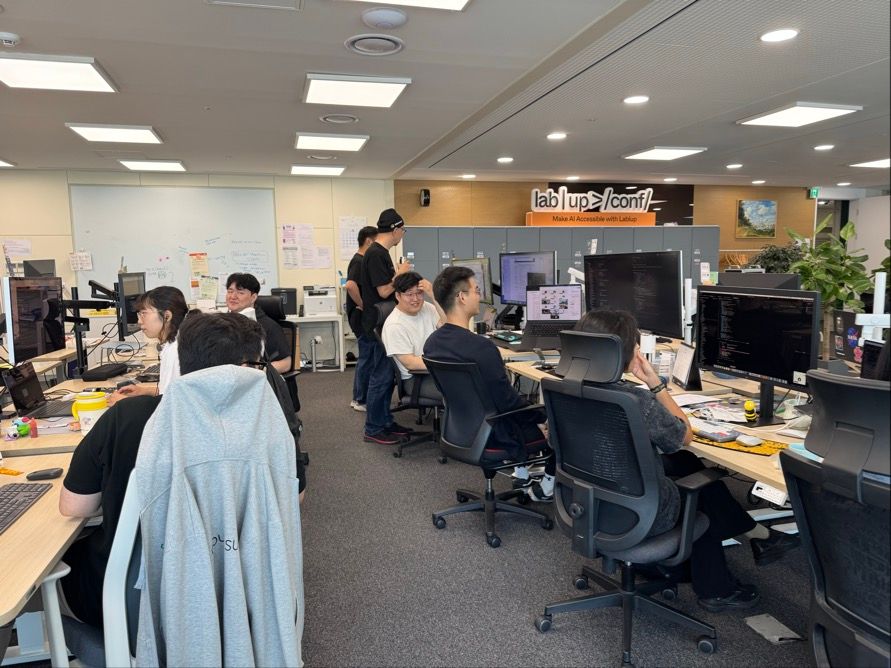 The company provided every hackathon participant with a Claude Code account, and for those who found Claude Code challenging, Google AI Studio offered an easier entry point. To ensure even those without a development background could get started, we held introductory sessions covering everything from setting up the development environment on company devices to sharing best practices for building example projects with each tool. We also discussed how to craft clear, AI-understandable planning prompts and shared tips for guiding the AI’s coding process in the right direction.
The company provided every hackathon participant with a Claude Code account, and for those who found Claude Code challenging, Google AI Studio offered an easier entry point. To ensure even those without a development background could get started, we held introductory sessions covering everything from setting up the development environment on company devices to sharing best practices for building example projects with each tool. We also discussed how to craft clear, AI-understandable planning prompts and shared tips for guiding the AI’s coding process in the right direction.
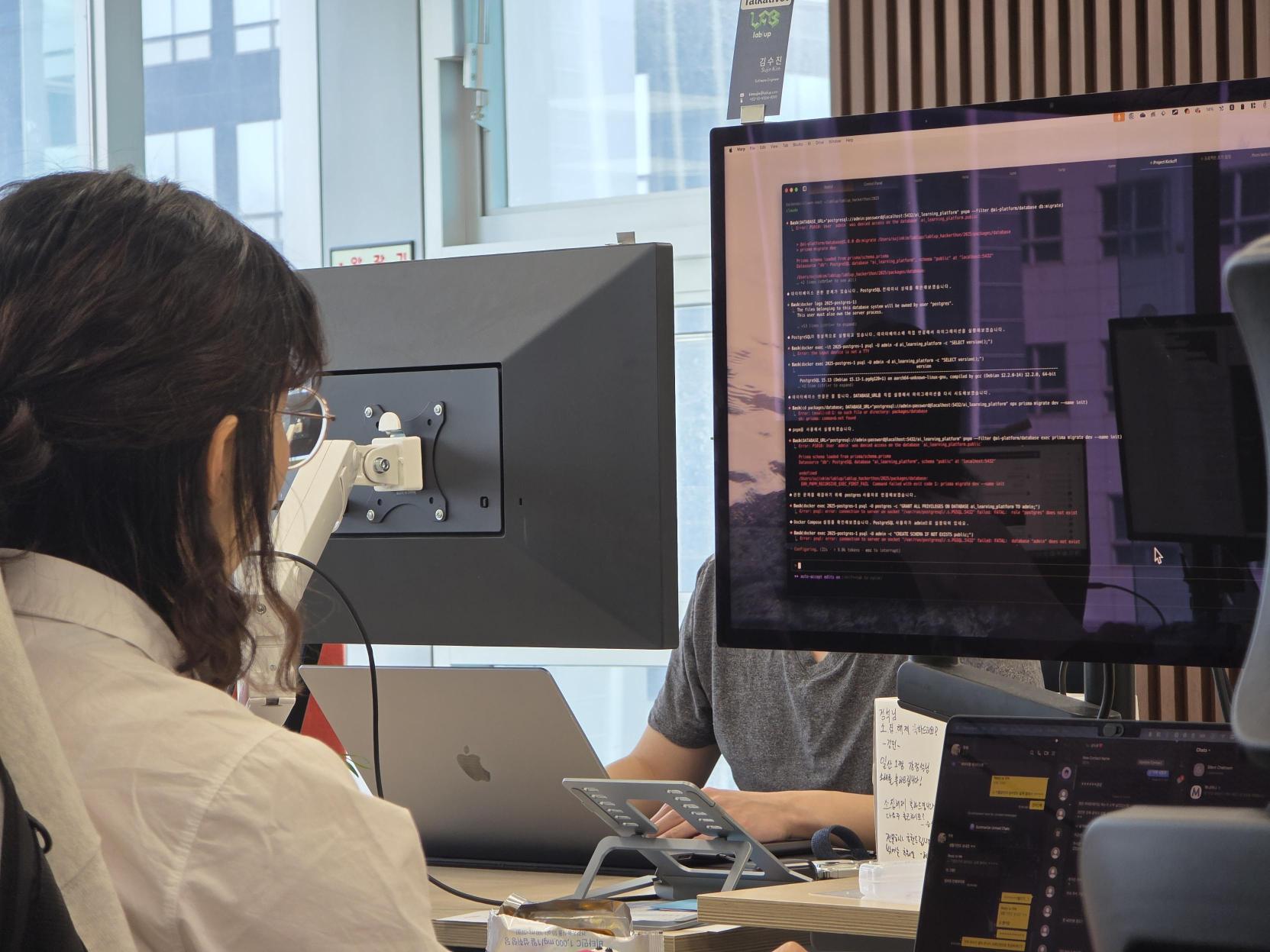 After these sessions, participants were given just one hour to turn their written project plans into working prototypes. My own project, built with Google AI Studio, was a “Work Assistant Tracker” designed to automate work logs and reference searches. With this tool, users could enter their daily tasks in natural language, and the program would automatically generate and save daily work cards, as well as find past similar records based on keywords. During development, I encountered issues with duplicate entries and missing daily summaries, which reduced search accuracy. To address this, I defined a clear input format and designed a prompt structure organized by date, task name, keywords, and priority—this helped improve the overall workflow.
After these sessions, participants were given just one hour to turn their written project plans into working prototypes. My own project, built with Google AI Studio, was a “Work Assistant Tracker” designed to automate work logs and reference searches. With this tool, users could enter their daily tasks in natural language, and the program would automatically generate and save daily work cards, as well as find past similar records based on keywords. During development, I encountered issues with duplicate entries and missing daily summaries, which reduced search accuracy. To address this, I defined a clear input format and designed a prompt structure organized by date, task name, keywords, and priority—this helped improve the overall workflow.
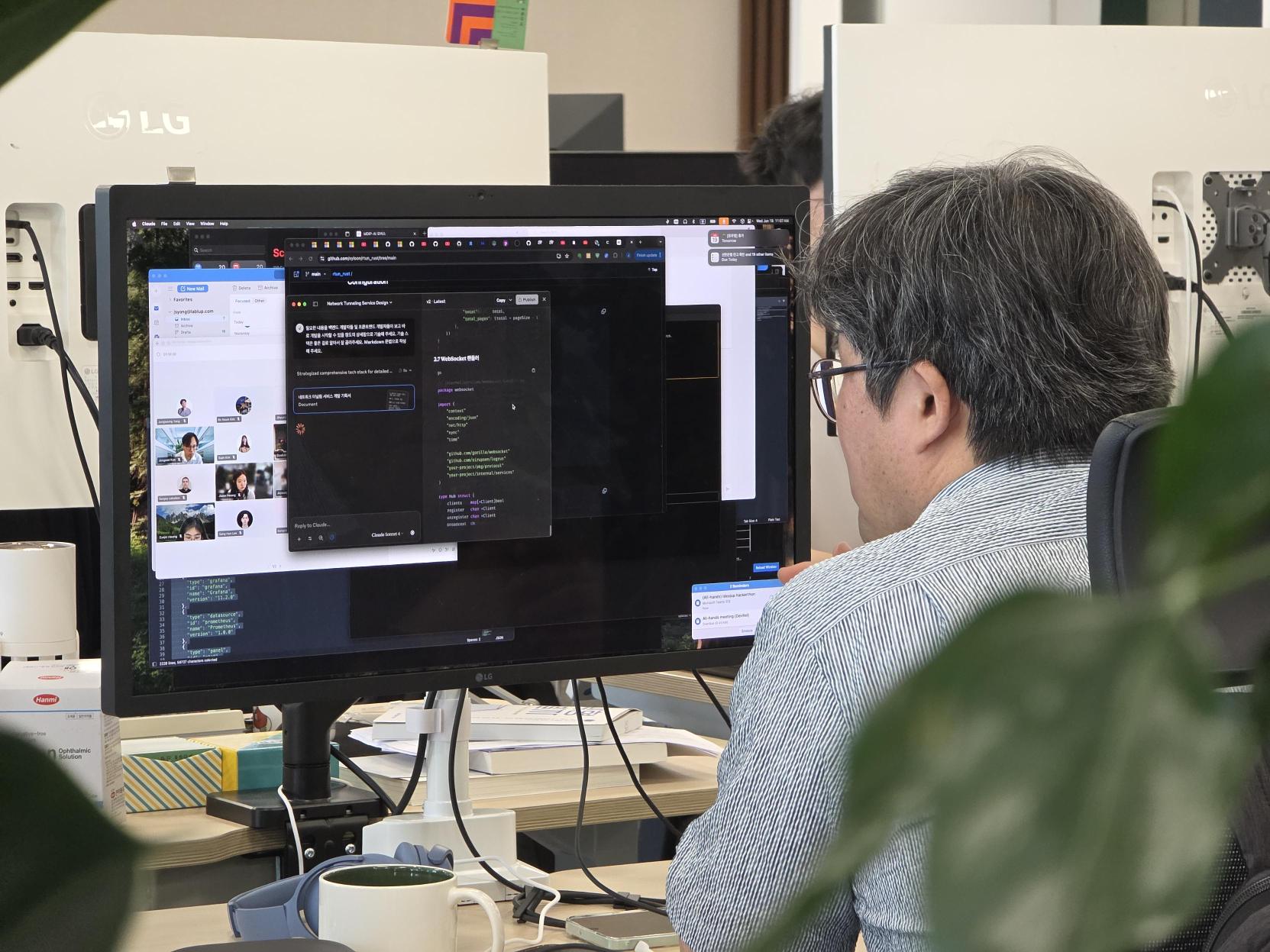 Other participants faced their own challenges. For example, Jongmin Kim, who created an integrated documentation tool, found that the AI often built the product according to its own preferred methods rather than his designs, requiring him to repeatedly revise his prompts. Jinho Heo, who aimed to work with local files, had to continually adjust his prompts because the AI kept designing the backend to upload files to Amazon S3 instead of working locally. Through these experiences of observing the AI’s approach, refining prompts, and striving for the right design, we all gained valuable insights into efficient problem-solving in the age of AI.
Other participants faced their own challenges. For example, Jongmin Kim, who created an integrated documentation tool, found that the AI often built the product according to its own preferred methods rather than his designs, requiring him to repeatedly revise his prompts. Jinho Heo, who aimed to work with local files, had to continually adjust his prompts because the AI kept designing the backend to upload files to Amazon S3 instead of working locally. Through these experiences of observing the AI’s approach, refining prompts, and striving for the right design, we all gained valuable insights into efficient problem-solving in the age of AI.
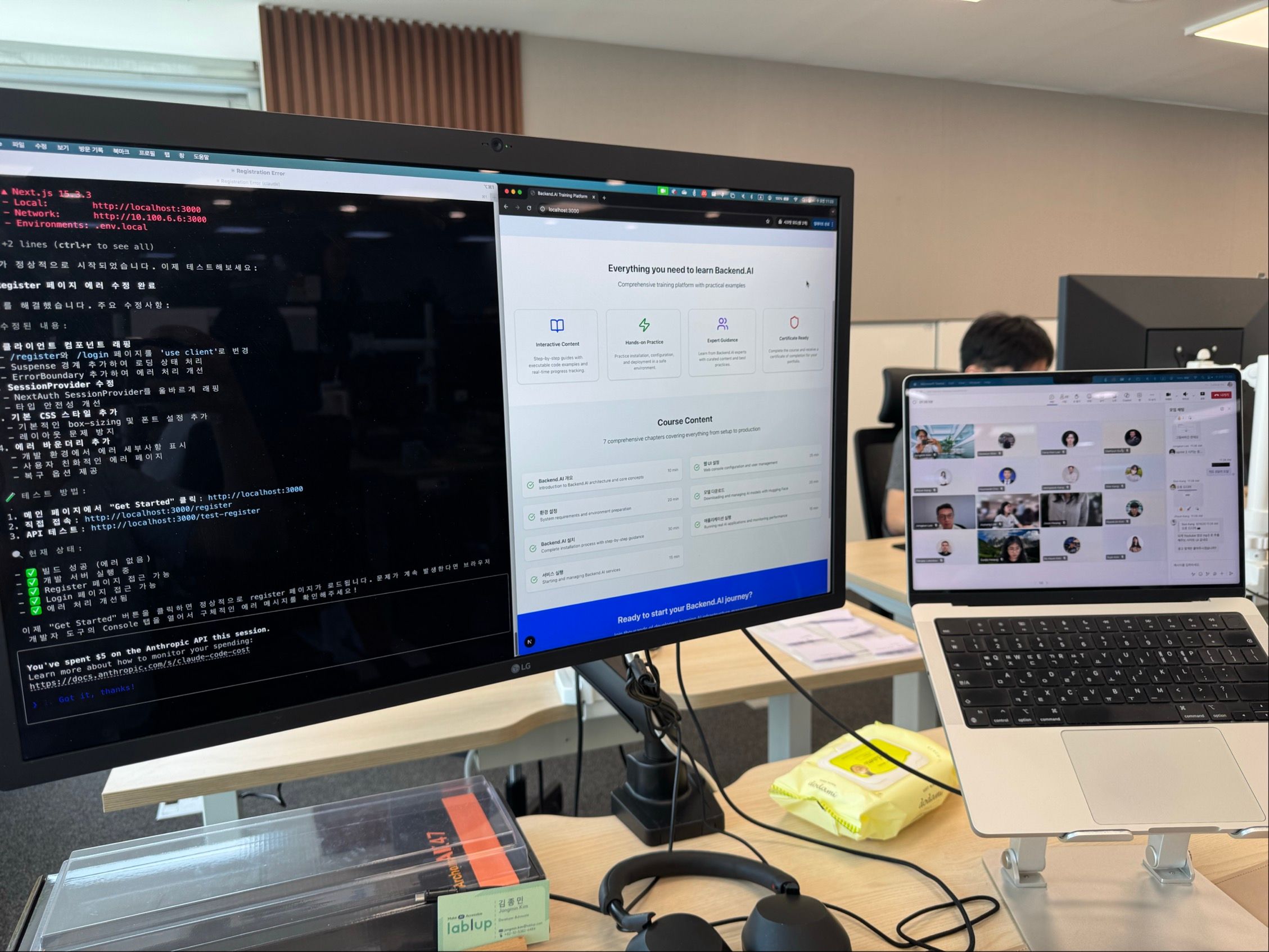 The hackathon concluded with a sharing session, where everyone presented their creations—explaining the problem they tackled, the product they built, the tools they used, and how everything worked. All team members then voted for the most compelling project, with evaluation focusing on problem understanding, effective use of AI tools, and the level of practical implementation.
The hackathon concluded with a sharing session, where everyone presented their creations—explaining the problem they tackled, the product they built, the tools they used, and how everything worked. All team members then voted for the most compelling project, with evaluation focusing on problem understanding, effective use of AI tools, and the level of practical implementation.
 The top prize went to Kangmin Kwon’s “AI Lunch Picker” bot. This tool helps employees get lunch menu recommendations, check restaurant reviews, and even write their own. Users can spin a roulette to randomly select a menu category or specify a desired cuisine (like Chinese or Korean) and view restaurant options within a 500m–3km radius, complete with both Google and in-house reviews. The bot also allows users to leave direct feedback, naturally accumulating shared insights. Built with Claude Code, the frontend uses React and the backend is based on FastAPI. Developing the roulette feature required multiple iterations—refining prompts and implementation strategies—offering a hands-on experience of collaborating with AI tools. The project also showed real promise for future use as an internal service.
The top prize went to Kangmin Kwon’s “AI Lunch Picker” bot. This tool helps employees get lunch menu recommendations, check restaurant reviews, and even write their own. Users can spin a roulette to randomly select a menu category or specify a desired cuisine (like Chinese or Korean) and view restaurant options within a 500m–3km radius, complete with both Google and in-house reviews. The bot also allows users to leave direct feedback, naturally accumulating shared insights. Built with Claude Code, the frontend uses React and the backend is based on FastAPI. Developing the roulette feature required multiple iterations—refining prompts and implementation strategies—offering a hands-on experience of collaborating with AI tools. The project also showed real promise for future use as an internal service.
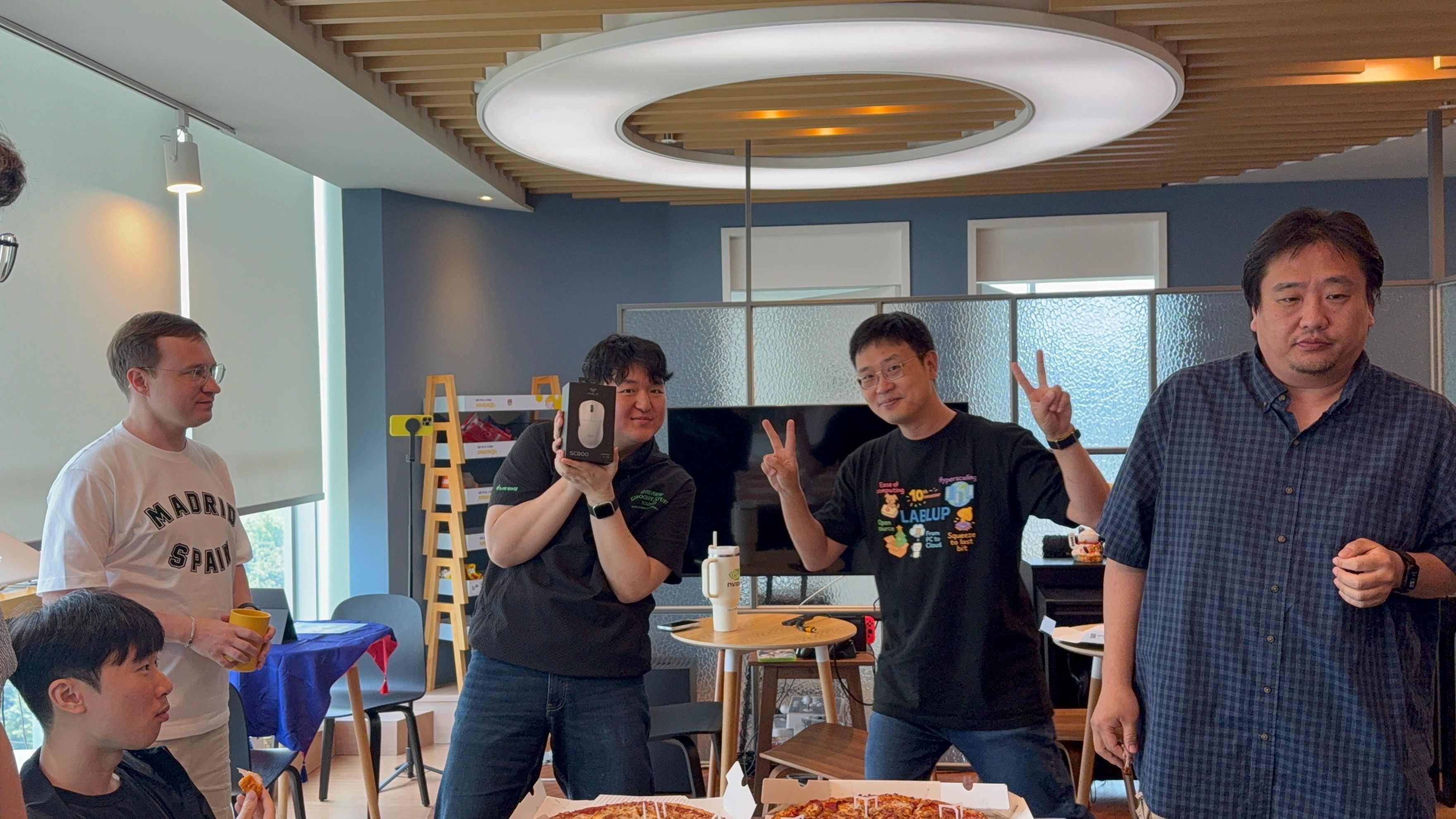 As a reward for his first-place finish, Kangmin received an AULA SC800 gaming mouse.
As a reward for his first-place finish, Kangmin received an AULA SC800 gaming mouse.
AI-native Lablup
An AI-native organization is one that can integrate AI structurally from the very first step of defining a problem, all the way through designing and executing solutions. This recent hackathon brought about a profound shift at Lablup. It wasn’t just about learning how to use new tools—every team member began to share a sense of how to interpret challenges and leverage AI to solve them, spreading this intuition throughout the entire company.
Even now, AI can’t work entirely independently of human understanding. The deeper your knowledge of code, computing, and networks, the more effectively you can engage in agentic coding. Personally, lacking deep expertise in frontend and backend development meant I had to invest significant resources into troubleshooting. With more development knowledge, I could have built my project faster and more efficiently. Other developers echoed this sentiment: to truly guide Claude Code in the right direction, you first need a clear concept of what you’re building and how you want to design it.
Looking ahead, people will increasingly interact and collaborate with multiple AI agents. The most essential skill will be the ability to identify the core of a problem and see the big picture, ensuring AI follows your intent accurately. While AI models can write code for you, it’s still up to humans to judge whether that code is functional and to adjust it for the right context.
The hackathon sparked some existential questions—like “What will developers do in the future?”—but Lablup’s team quickly began using AI to expand their own capabilities. They started automating repetitive tasks, generating essential documentation, and distributing work among multiple agents, breaking down organizational silos in the process. Technology is moving ever closer to people, and at Lablup, we’re committed to staying at the forefront—finding the best ways to harness these advancements every day.
Reflections from Lablup’s 1st Internal Hackathon
🧑🏻💻 Kangmin Kwon: “Using Claude Code was a shocking experience that made me realize the era of ‘verbal coding’—writing code by simply describing it—has truly arrived. While there were some minor errors in the AI-generated code, I was deeply impressed by how dramatically it shortened the time needed for project planning and implementation. With no prior frontend experience and only basic familiarity with FastAPI, a task that would have taken me over a week to develop on my own was reduced to just two hours for a working skeleton and demo using Claude Code. This hackathon made me realize that the AI landscape we’ll face in the next year or two could be far more radical than we imagine.”
👩🏻💻 Jiwon Hwang: “Building a Lablup-tailored recruitment recommendation service with Google AI Studio was eye-opening. Even without formal development training, I found that having an idea was enough to turn it into a functioning service. The ability to quickly test out new ideas was a novel experience, and it gave me the confidence to try building even more in the future.”
🧑🏻💻 Hyunkyung Moon: “It was a unique experience to run an entire project from start to finish using only AI tools. There were plenty of trial and error moments, but through that process, I gained a better sense of how to work with AI tools. I believe this experience marks an important starting point for our organization’s journey toward becoming truly AI-native.”
🧑🏻💻 Sungchul Hong: “It was a valuable opportunity to try out the latest version of Claude Code. Although I couldn’t fully implement my envisioned results within the given time, I realized the importance of a concrete and precise design process.”





